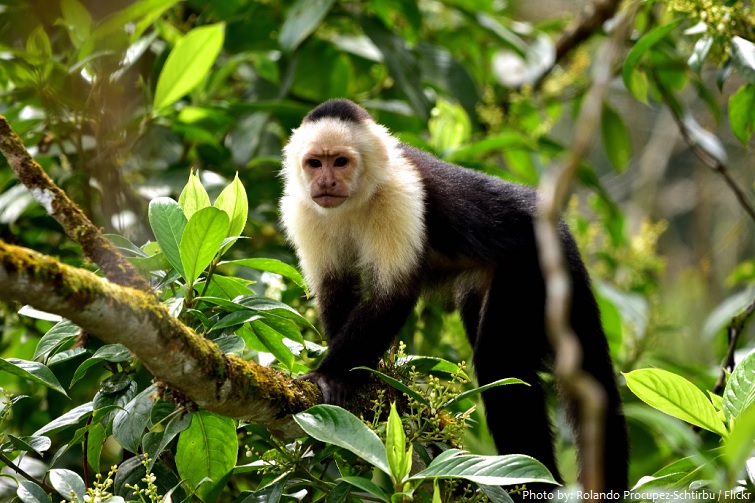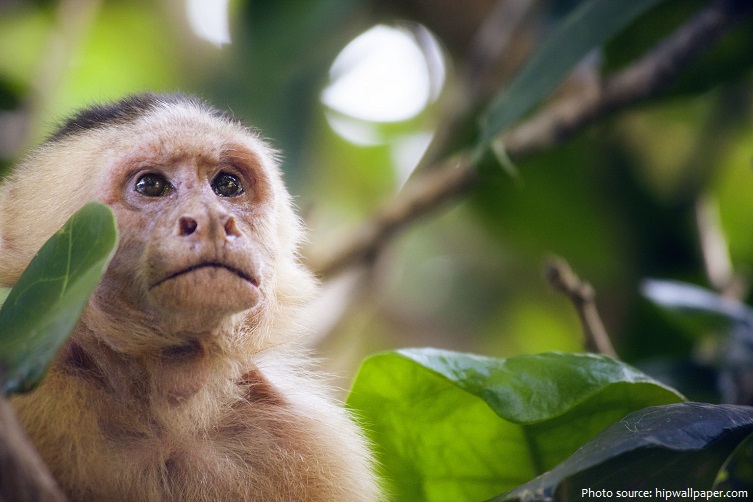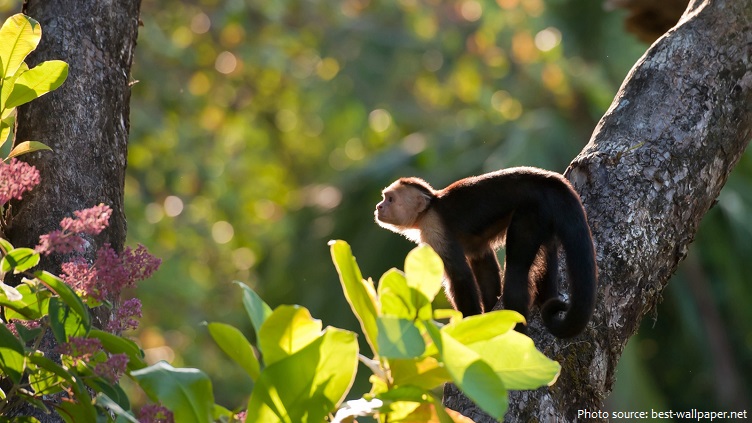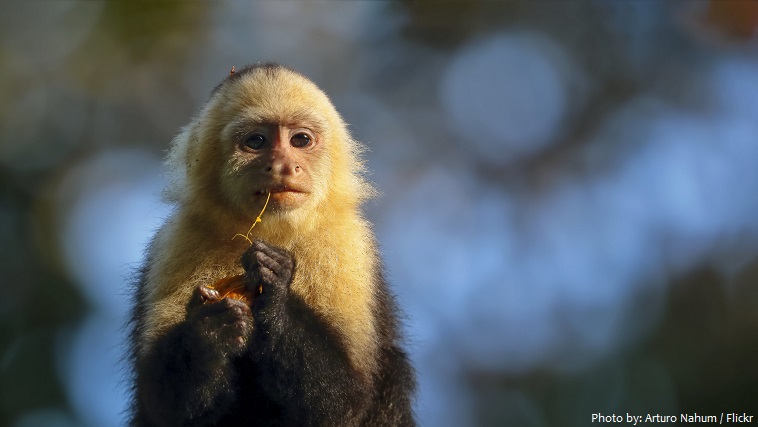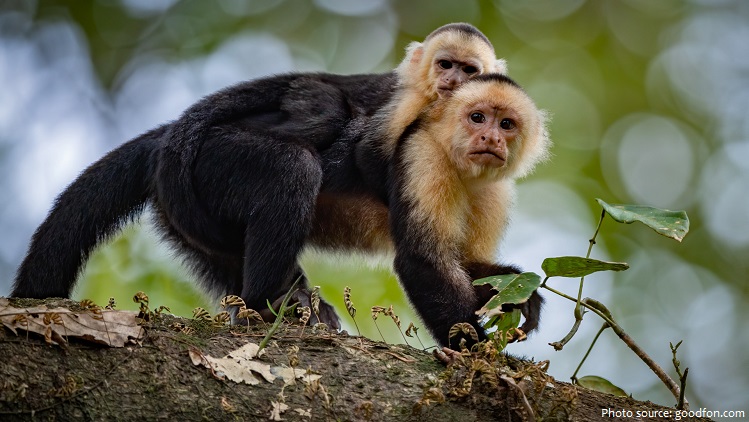The capuchin monkeys are New World monkeys of the subfamily Cebinae.
Capuchin monkeys are native to Central and South America.
They are particularly abundant in Argentina, Brazil, Costa Rica, Honduras, Paraguay and Peru.
Their habitas include low-lying forests, mountain forests and rainforests. They also can easily adapt to places colonized by humans.
The lifespan for capuchin monkeys is from 15 to 25 years in the wild, and up to 50 in captivity.
These monkeys are round-headed and stockily built, with fully haired prehensile tails and opposable thumbs.
Capuchin monkeys are from 30 to 55 centimeters (12 to 22 inches) long, with a tail of about the same length. On average, they weigh from 1.4 to 4 kilograms (3 to 9 pounds).
Capuchins are black, brown, buff or whitish, but their exact color and pattern depends on the species involved. Capuchin monkeys are usually dark brown with a cream/off white coloring around their necks.
These monkeys are diurnal and arboreal, and run and jump quickly through the trees.
They frequent the tops of tall forest trees but roam throughout the vertical range of their habitat from forest floor to canopy.
With the exception of a midday nap, they spend their entire day searching for food.
At night they sleep in the trees, wedged between branches.
A typical diet for capuchin monkeys includes fruit, insects, leaves and small birds. They are particularly good at catching frogs and cracking nuts, and it is suspected that they may also feed on small mammals. Capuchins living near water will also eat crabs and shellfish by cracking their shells with stones.
Capuchin monkeys often live in large groups of 10 to 35 individuals. A troop’s home range covers from 50 to 100 hectares (124 to 247 acres), and individuals travel about 3 kilometers (1.9 miles) per day within the range.
These monkeys are territorial animals, distinctly marking a central area of their territory with urine and defending it against intruders, though outer areas may overlap.
Capuchin monkeys apparently breed at any time of year, although in Central America births are more frequent during the dry season. Gestation takes about six months, and births are usually single.
The young cling to their mother’s chest until they are larger, then they move to her back. Adult male Capuchin rarely take part in caring for the young. Juveniles become fully mature within four years for females and eight years for males.
Natural predators include jaguars, cougars, jaguarundis, coyotes, tayras, snakes, crocodiles and birds of prey.
Since they have a high reproductive rate and can easily adapt to their living environment, loss of the forest does not negatively impact the Capuchin monkey populations as much as other species, although habitat fragmentation is still a threat.
The word “capuchin” derives from a group of friars named the Order of Friars Minor Capuchin, an offshoot from the Franciscans, who wear brown robes with large hoods. When Portuguese explorers reached the Americas in the 15th century, they found small monkeys whose coloring resembled these friars, especially when in their robes with hoods down, and named them capuchins.
Capuchins, considered among the most intelligent of the New World monkeys.
Because, capuchin monkeys are clever they are easy to train. They are used to help people who are quadriplegics in many developed countries. Capuchin monkeys have also become popular pets and attractions for street entertainment.
They are readily identified as the “organ grinder” monkey, and have been used in many movies and television shows.
